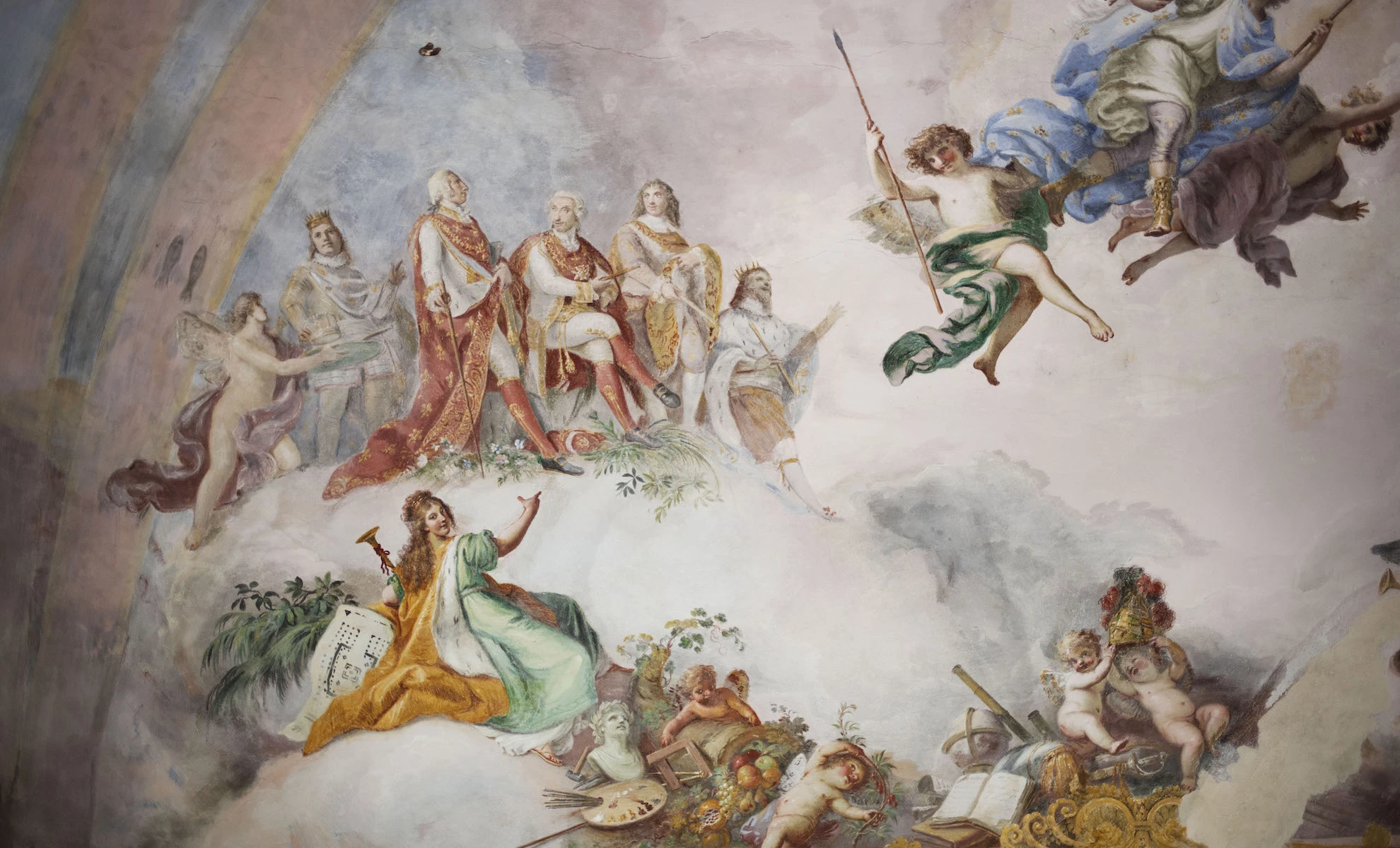Twenty-five years of history: so Charles of Bourbon reigned over Naples, choosing just his name without numbers, to immediately highlight the difference of his Kingdom from those who had preceded him, first of all the Habsburgs.
In the Royal Palace of di Carditello a fresco portrays Carlo seated and his son Ferdinando on the left | Ph. Machi di Pace
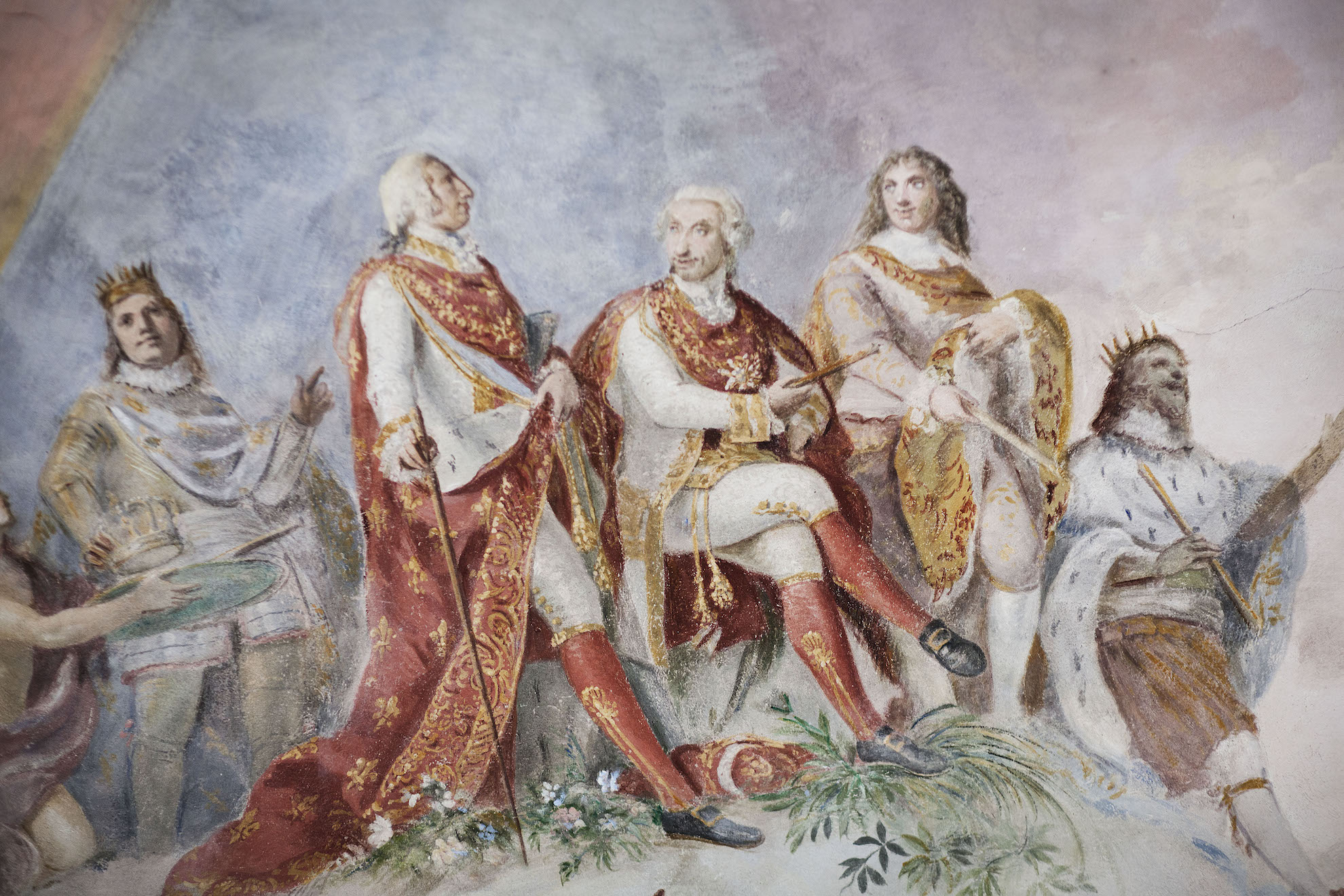
In 126 years of the Bourbon dynasty - from 1735 to 1861, apart the break of the Napoleonic period - Charles' half fifty years are still today the most dense period, full with nostalgia. The positive opinions are not only fruit of groups that refer to “neo-Bourbonism” current, but also involve historians and scholars. Important, in this sense, are the writings of Giuseppe Galasso, who defines “the most beautiful hour” for the Kingdom of Naples since Charles took the throne.
“Go towards Sicily, which once open to free government, it will be yours. Go and win. The most beautiful crown of Italy is waiting for you”Elisabeth Farnese – Letter to the future king Charles
It was with him that Naples became again the capital of a kingdom, after the Austrian troubles and the decades as a Spanish viceroyalty. Cultural life flourished again: the Neapolitan Enlightenment, together with the Milanese one, is still considered as one of the founding stones of contemporary thought. Every aspect of social life was affected, from economics to political life, opening up to the knowledge of new ideas coming from France, England, Holland on liberalism, mercantilism, on the desire to subvert a society until then based on old caste bonds. It was perhaps the first time, as Treccani writes, “that the South had the weight and the privilege of those who start before the others”.
The Royal Palace of Caserta | Ph. Anna Monaco - Trentaremi
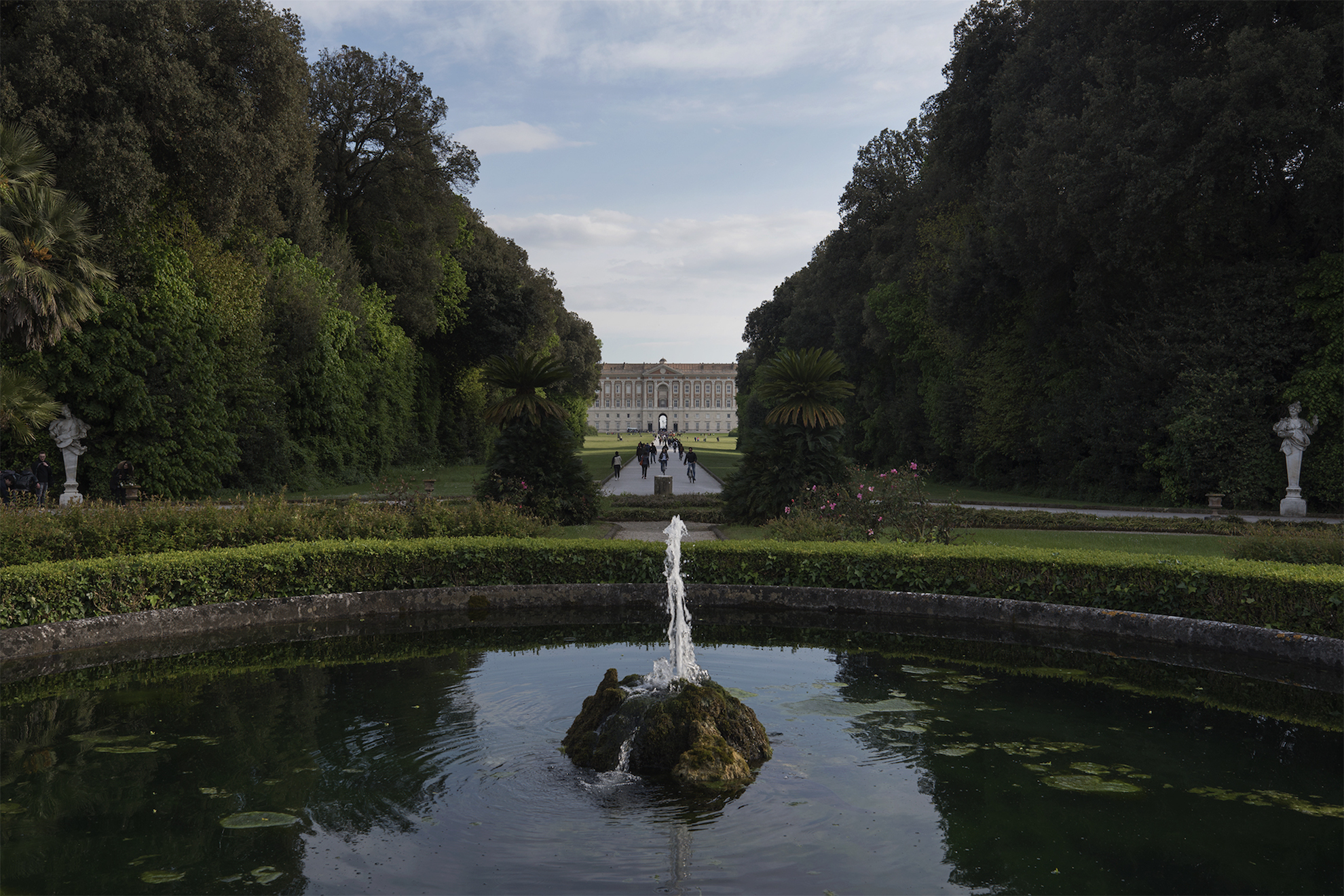
In the architectural wonders you can see the cultural signature of a city that wanted to become the center and fulcrum of international politics. Three names above all: Royal Palace of Caserta, Royal Palace of Capodimonte and Royal Theater of San Carlo. No single intervention was prepared at random. The monumental style, the construction of the gardens, the places where you can enjoy the opera, aligned Naples with the other European capitals in urban style and social life.
Farnese Bull, masterpiece of the Farnese Collection | Ph. Machi di Pace
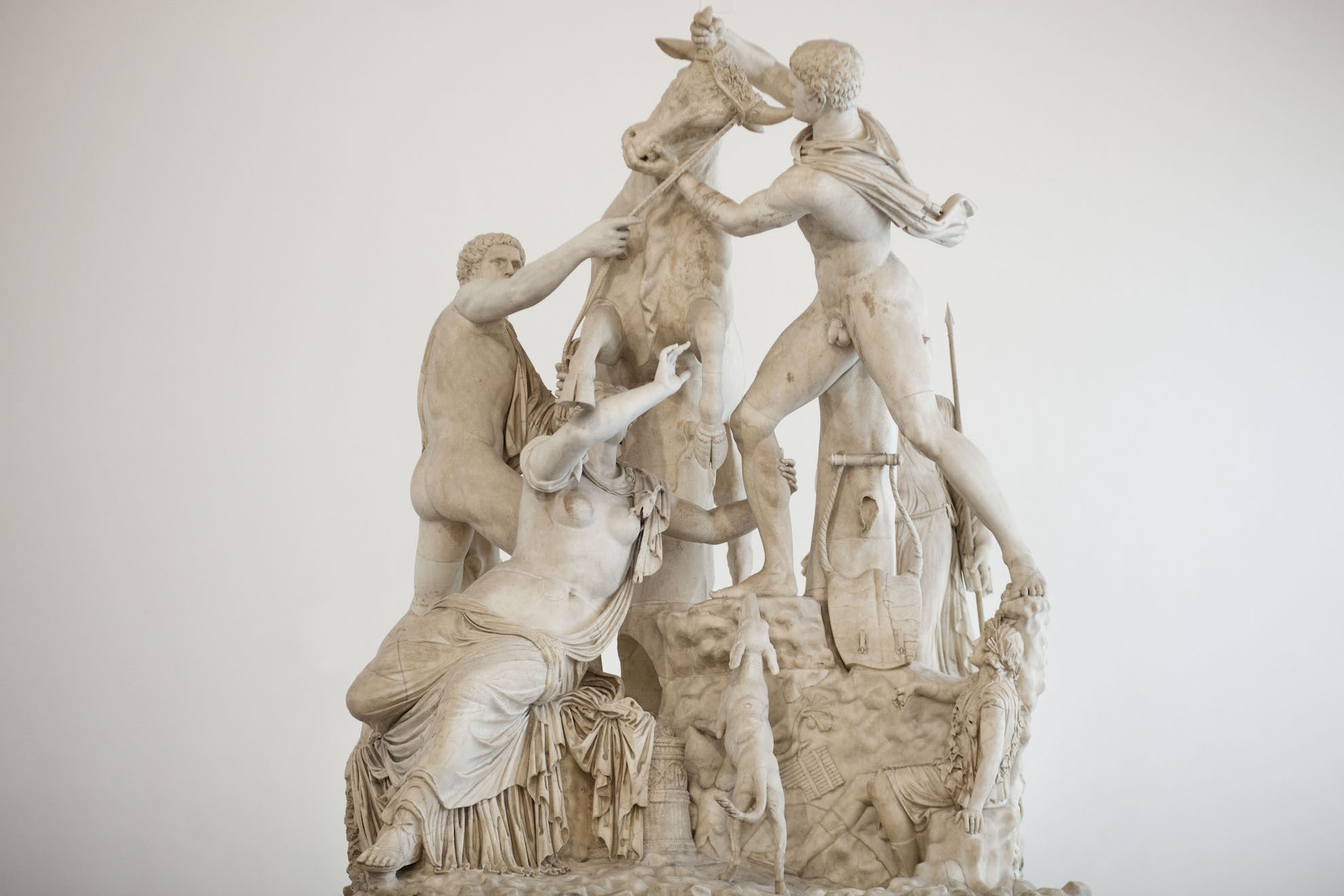
It is no coincidence that in recent years the city became one of the favourite destinations of the Grand Tour, when the rich and cultured European aristocracy, from Goethe to Stendhal, began to know the wonders of Italian art and culture. Naples became an indispensable stop also because of one discovery that made its mark on the cultural life of the centuries to come: ancient Pompeii, destroyed by the eruption of 79 AD, whose first excavations date back to 1748.
The Royal Palace of Capodimonte | Ph. Anna Monaco
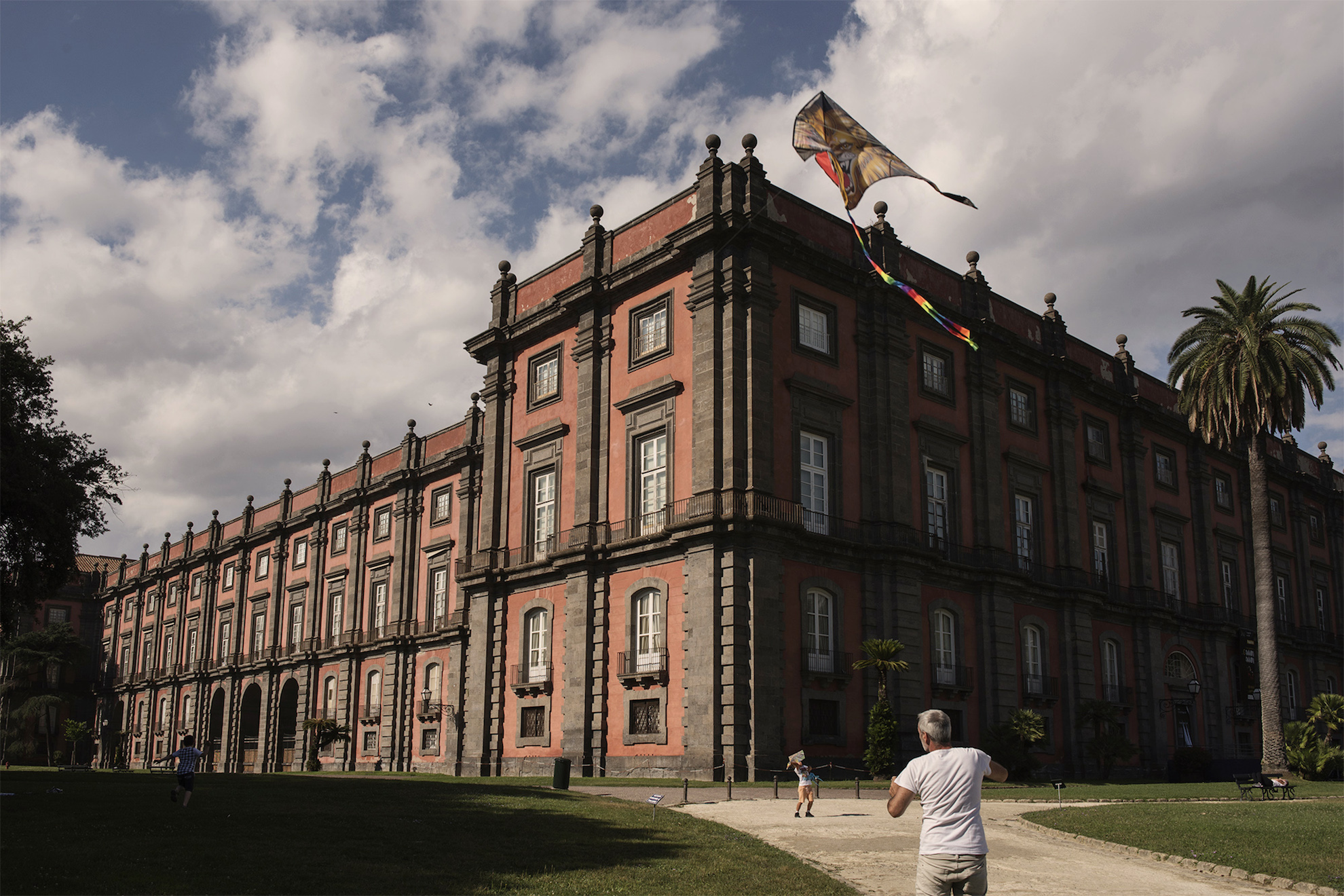
Charles' intention was to give back to the monarchy a guiding function rather than an “autocratic” privilege over his subjects. An example above all is the establishment of the real estate registry. What appears to be a mere bureaucratic intervention takes on almost revolutionary outlines in a social context undermined by the privileges of census, the lack of roads and communications, of elementary schools where farmers could become literate.
The theater of San Carlo | Ph. Roberto Salomone
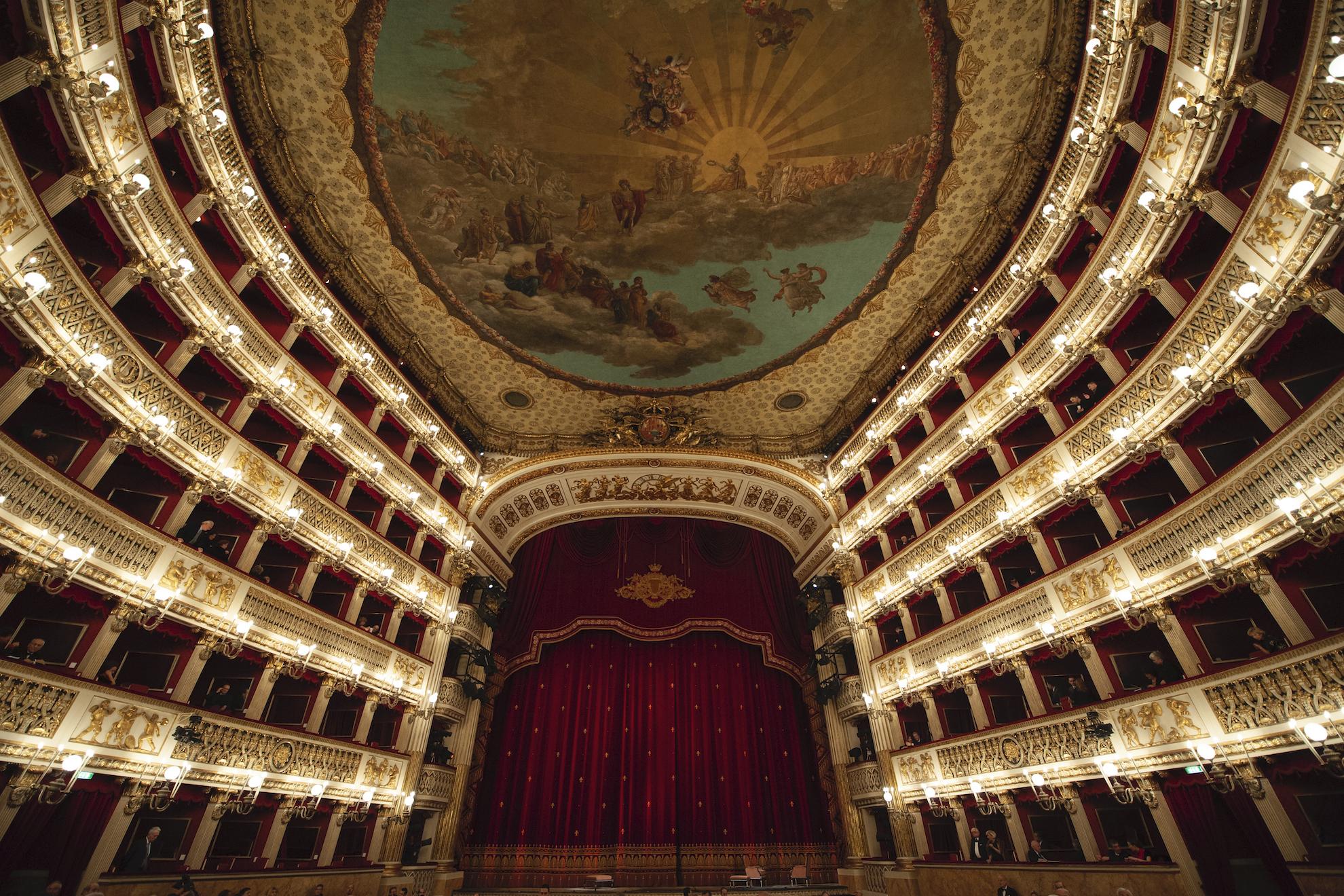
The cadastre of king Charles, in fact, aimed to eliminate the privileges enjoyed until then by the wealthiest classes of the Kingdom, to the detriment of the more humble, on whom taxes and tributes generally weighed. This was achieved taking a rigorous census of real estate, livestock and financial assets in the Kingdom and calculating taxes on various categories of people. A reform complex in execution but “simple” in the fundamentals, result of the mind of the counselor Bernardo Tanucci.
Pompeii ruins | Ph. Anna Monaco
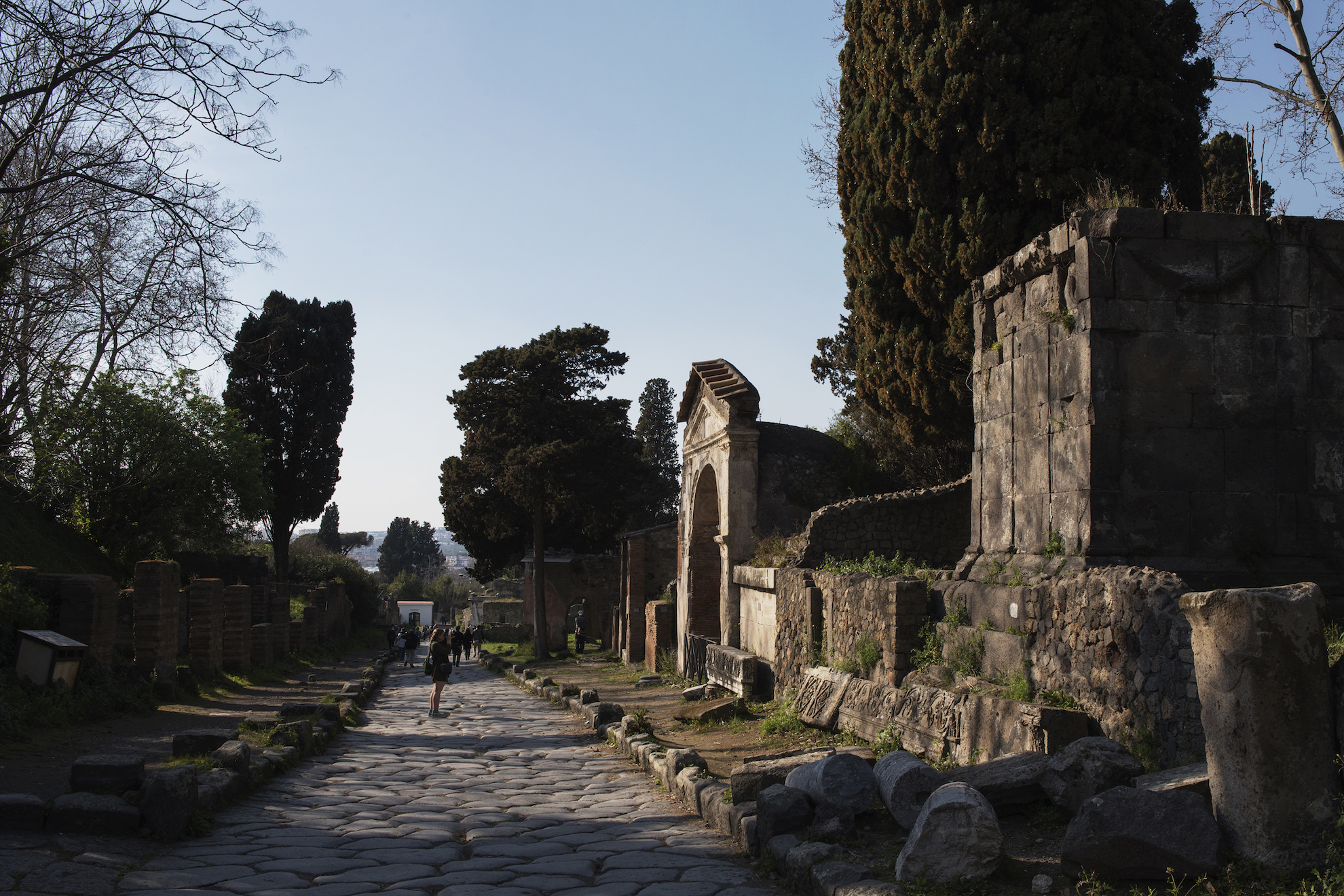
Reform that no one had implemented until then. The first half of the eighteenth century, in Naples, was therefore a lively and dense period. An historical arch that is still evident in the city today, from buildings to churches, from royal residences to archaeological heritage, such as the sumptuous collection – now preserved in the National Archaeological Museum of Naples – that Charles of Bourbon owned, as Duke of Parma and Piacenza, son of Elisabetta Farnese.

